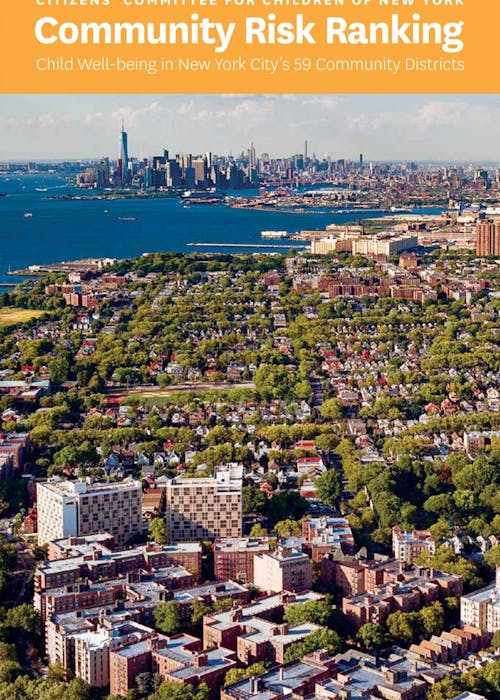

CCC Community Risk Ranking: Child Well-Being In New York City’s 59 Community Districts
Data Resources
December 7, 2016
CCC’s Community Risk Ranking combines data from across multiple dimensions of child well-being – economic security, health, housing, education, issues specific to teens and youths, and family and community – to provide a better understanding of where risks to child well-being concentrate across New York City’s 59 community districts. This information can help to determine where additional resources, supports or services are needed to improve outcomes for children.
The report lays bare the geographic and racial/ethnic disparities facing children and families across the city:
- Inequalities across communities: The report paints a clear picture of how the experiences of children differ from one community to the next. For example, communities in midtown and lower Manhattan continue to rank lowest in risk, while neighboring upper Manhattan communities show stark disparities. Nearly half of children in East Harlem live in poverty compared to less than 7 percent on the Upper East Side, just over a mile away. Similar inequalities are seen in other boroughs as well.
- Racial/Ethnic disparities: Data in the report demonstrate the extent to which black and Latino children predominantly live in neighborhoods where the greatest levels of risk concentrate, impacting their health, housing, education and overall well-being. CCC’s analysis shows that every one of the 35 districts in which more than half of children are black or Latino ranked either moderate or high risk.
We hope that this child well-being index will help families, elected officials, policy-makers, researchers, foundation and corporate program officers, and New Yorkers at large better understand the needs of the communities in which they live, work, and serve, so that they may advocate for the resources necessary to make New York City a better place for every child.



